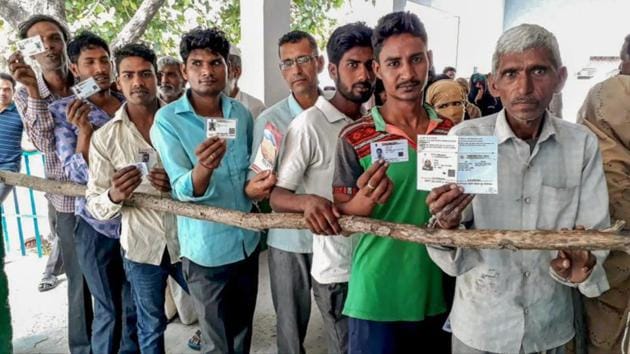What the latest round of Lok Sabha and assembly bypoll results point to
While factors such as high fuel prices or the agrarian crisis may have played a part, the main drivers of the results were alliance arithmetic and local factors. Time and again, coalitions in India have proven the strength of groupings in elections in a first-past-the-post system. And time and again, such alliances have proved fleeting. The byelection results is a clear indication for opposition parties of the gains they could make in 2019 if they can keep it together.
If the state elections scheduled for the end of the year in Madhya Pradesh, Chhattisgarh, and Rajasthan are the semi-final in the run-up to the general elections in 2019, then, the bypolls to four Lok Sabha constituencies and nine assembly constituencies held this past Monday were akin to a warm-up match. The usual caveat is that it doesn’t make sense to read too much into the results of warm-up matches. Still, there are typically a few pointers in such matches that indicate the strengths of the individual players or how well some players are combining; for instance, in football, how well the combination of a centre forward and a winger that has never played together before is working. And given how much India’s strongest political force currently, the Bharatiya Janata Party (BJP) invests in all elections — corporation to parliamentary — every ballot becomes a referendum on the party’s electoral strategy.

From that perspective, the opposition can take some cheer from the bypolls, results to which were announced yesterday; conversely, the BJP has a problem on its hands, and needs to address some points of concern.
The Lok Sabha scorecard from the latest set of bypolls reads 2-2, but this is far from a draw. The BJP lost the critical Kairana seat in the Lok Sabha, which it won in 2014, to a Rashtriya Lok Dal (RLD) candidate supported by the Samajwadi Party (SP), the Bahujan Samaj Party (BSP), and the Congress. The trend-line in Uttar Pradesh, the state that sends 80 representatives, the most, to the Lok Sabha, is now clear. The BJP has now lost three by-elections in a row in the state: Gorakhpur, Phulpur, and now Kairana. If the coalition in Uttar Pradesh lasts, the BJP will be hard-pressed to come even close to the 71 seats (73 along with allies) it won in 2014. That formed the cornerstone of its huge electoral success in that year’s parliamentary polls. The BJP perhaps realised how high the stakes were in Kairana. Uttar Pradesh chief minister Yogi Adityanath campaigned in Kairana, as did his deputy Keshav Prasad Maurya and five of his ministers. A day ahead of the actual polling, Prime Minister Narendra Modi inaugurated the Eastern Peripheral Expressway in Baghpat, next door to Kairana in what was not really an election rally, but almost one. Modi remains the BJP’s star campaigner, although he usually prefers to sit out bypolls.
Kairana wasn’t the only setback for the BJP. It also lost the Bhandara- Gondia Lok Sabha seat in Maharashtra that it was expected to win. It won the Palghar one in the same state, and its ally won the sole parliamentary seat in Nagaland.
If 2-2 didn’t feel like a draw, it was also possibly because of the scorecard in the assembly bypolls.
In all, of the nine assembly seats for which bypolls were held, the BJP won only one. The Congress won another assembly seat unopposed. The party also won the RR Nagar assembly election in Karnataka that had been deferred. That makes the tally 9 for the opposition and 1 for the BJP. The opposition’s victories were a result of several factors, but the common thread running through most of them is a strong and electorally relevant alliance, between regional parties, or between a national party and a regional one. In two, it was the result of the dominance of a regional (Trinamool Congress in West Bengal) or national party (the CPM in Kerala).
While factors such as high fuel prices, the lack of jobs, or the agrarian crisis may have played a part, the main drivers of the results were alliance arithmetic and local factors. The BJP is well aware of this. BJP President Amit Shah said last week that the only way for the party to combat a united opposition in Uttar Pradesh was to ensure that it polled more than 50% of the votes. That did not happen in Kairana.
Time and again, coalitions in India have proven the strength of groupings in elections in a first-past-the-post system. And time and again, such alliances have proved fleeting. The byelection result is a clear indication for opposition parties of the gains they could make in 2019 if they can keep it together.



